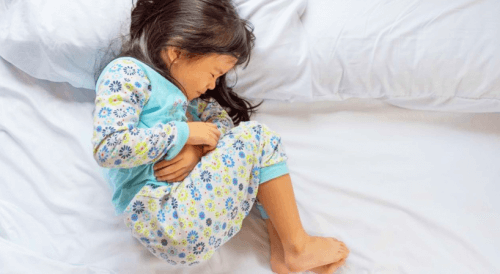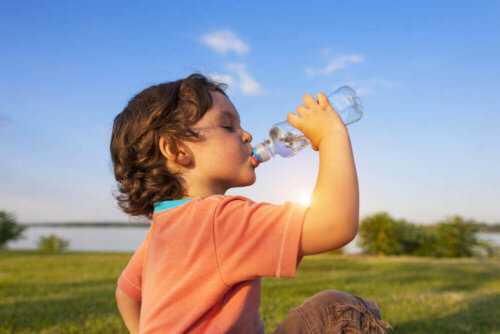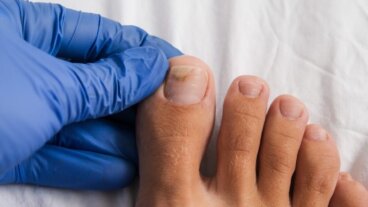Natural Ways to Relieve Urinary Tract Infections in Children


Written and verified by the doctor Nelton Abdon Ramos Rojas
We all worry whenever our child has an infection and of course we want to relieve it, especially when they afflict the urinary tract. This is because they can cause significant damage. Therefore, it’s necessary to alleviate it and beat it quickly to avoid further complications. However, if you go to the doctor and follow their guidelines, it’s possible to both cure the discomfort and prevent further damage.
Urinary tract infections are a very common problem for everyone at any age. However, they usually occur mostly in the first years of life. Although they are easy to treat, it’s important not to underestimate the importance of your doctor’s instructions for recovery.
So, in this article, we’ll tell you how to naturally relieve and deal with urinary tract infections in children.
The causes of UTIs in children
These infections can occur for many reasons that make bacteria reach the bladder or kidneys, such as:
- Bubble baths
- Wearing wet or very tight clothing
- Holding back the urge to urinate. Not going to the bathroom when you feel like it is one of the most common causes of infections.
- Bad hygiene. Wiping from back to front after going to the bathroom, allowing bacteria to enter the bladder.
- Nervous system diseases that make it difficult to empty the bladder
- Vesicoureteral reflux, which is the backward flow of urine from the bladder into the kidneys. It’s a normal condition during the first weeks after birth.
Learn how to Make a Watermelon Seed Infusion and Get These Eight Benefits
Symptoms of UTIs in children

Depending on the severity of the infection, urinary tract infections present themselves with the following symptoms:
- Urine may contain blood, be dark due to the infection, or have a strong odor
- There is a constant need to go to the bathroom
- Painful or burning urination
- Pressure or pain in the pelvis
- Problems holding urine
However, if not caught and treated early, your child may develop pyelonephritis (kidney infection). In this case, he may suffer from:
- Fever
- Red skin
- Chills
- Nausea and vomiting
- Severe pain in the belly and sides
Preventive measures to relieve a urinary tract infection

To keep these infections from occurring on a regular basis, we recommend you follow these tips:
- Avoid immersion baths (this includes bubble baths in the bathtub, swimming pools, and the like)
- Don’t wear tight-fitting clothing or clothing that prevents proper perspiration
- Change underwear regularly (to prevent the area from remaining moist and thus prevent bacteria from proliferating)
- Encourage your children to drink enough fluids throughout the day (especially water)
- Teach them to clean their genitals properly and, if necessary, accompany them to the bathroom and supervise the procedure
- Encourage your children to go to the bathroom when they feel the urge to go and to avoid holding it in for long periods of time
In this way, you won’t just be able to alleviate the symptoms, but you’ll also be able to help them avoid suffering from urinary tract infections in the future. As in many other cases, prevention will be the best weapon.
You might want to Discover the Benefits of Baking Soda Mixed with Honey
When no home remedies can relieve a urinary tract infection
Should none of these recommendations work for your child, we recommend you consult your doctor. Furthermore, they’ll examine your child and prescribe specific treatment that will help with the infection.
All cited sources were thoroughly reviewed by our team to ensure their quality, reliability, currency, and validity. The bibliography of this article was considered reliable and of academic or scientific accuracy.
- Kates, L. W. (2008). Pediatric urinary tract infection. In Emergency Management of Infectious Diseases. https://doi.org/10.1017/CBO9780511547454.049
- Montini, G., Tullus, K., & Hewitt, I. (2011). Febrile Urinary Tract Infections in Children. New England Journal of Medicine. https://doi.org/10.1056/nejmra1007755
- Shaikh, N., Morone, N. E., Bost, J. E., & Farrell, M. H. (2008). Prevalence of urinary tract infection in childhood: A meta-analysis. Pediatric Infectious Disease Journal. https://doi.org/10.1097/INF.0b013e31815e4122
- Hertz, M., Ben-Ami, T., & Rozin, M. (1989). Imaging urinary tract infection in children. Clinical Radiology. https://doi.org/10.1016/S0009-9260(89)80414-3
This text is provided for informational purposes only and does not replace consultation with a professional. If in doubt, consult your specialist.








